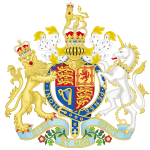- New South Wales Act 1823 (UK)
-
The New South Wales Act 1823 (4 Geo. IV c. 96) was an Act of the Parliament of the United Kingdom with the long title "An Act to provide, until the First Day of July One thousand eight hundred and twenty-seven, and until the End of the next Session of Parliament, for the better Administration of Justice in New South Wales and Van Diemen's Land, and for the more effectual Government thereof and for other Purposes relating thereto".
Contents
Background
The Act was passed in response to growing criticism in the colony of New South Wales of the lack of a proper superior court as well the lack of a proper responsible government. At the time, the governor of New South Wales had virtually unlimited powers and could only be overruled by the Colonial Office in the United Kingdom. Commissioner John Thomas Bigge was sent from London in 1819 to report on the state of the colony. Francis Forbes, formerly Chief Justice of Newfoundland, was heavily involved in the drafting of the bill presented to Parliament.
Main Objects of the Act
The Act set out to create a number of aims. Firstly, it authorised the creation of a Legislative Council for the colony of New South Wales. Secondly, it created the Supreme Court of New South Wales, being a court of equivalent authority to that of the Kings Bench in the United Kingdom. Thirdly, it created the office of Chief Justice of that Court, such as justice to be the supreme justice of the Court. The Chief Justice was an ex-officio member of the legislative council and also had to certify any laws as being proper. Fourthly, it authorised the eventual separation of Van Diemen's Land (now Tasmania) from the colony of New South Wales. Fifthly, it created the Supreme Court of Van Diemen's Land, which is now the Supreme Court of Tasmania. Sixthly, it created the office of Chief Justice of that Court.
Importance
This Act is seen within Australia is being the first steps towards representative democracy. The Act authorised the issuing of letters patent by the King of the United Kingdom.
In consequence of this legislation, Letters Patent establishing the New South Wales Supreme Court were sealed on 13 October 1823, and proclaimed in Sydney on 17 May 1824. They are known as the Third Charter of Justice.
Trivia
Amendments noted on the rear of the bill refer to the Act as the "New South Wales Jurisdiction Bill."
References
- State Archives of New South Wales (Accessed February 8, 2007)
- New South Wales Act 1823.
United Kingdom legislation Pre-Parliamentary legislation Acts of Parliament by states preceding
the Kingdom of Great BritainActs of the Parliament of England to 1483 · 1485–1601 · 1603–1641 · Interregnum (1642–1660) · 1660–1699 · 1700–1706
Acts of the Parliament of Scotland
Acts of the Parliament of Ireland to 1700 · 1701–1800Acts of Parliament of the
Kingdom of Great Britain1707–1719 · 1720–1739 · 1740–1759 · 1760–1779 · 1780–1800
Acts of Parliament of the United Kingdom of
Great Britain and Ireland and the United
Kingdom of Great Britain and Northern IrelandChurch of England Measures Legislation of devolved institutions Acts of the Scottish Parliament
Acts and Measures of the Welsh Assembly
Acts of the Northern Ireland Assembly / of the Northern Ireland Parliament
Orders in Council for Northern IrelandSecondary legislation Categories:- 1823 in law
- United Kingdom Acts of Parliament 1823
- United Kingdom law stubs
Wikimedia Foundation. 2010.

